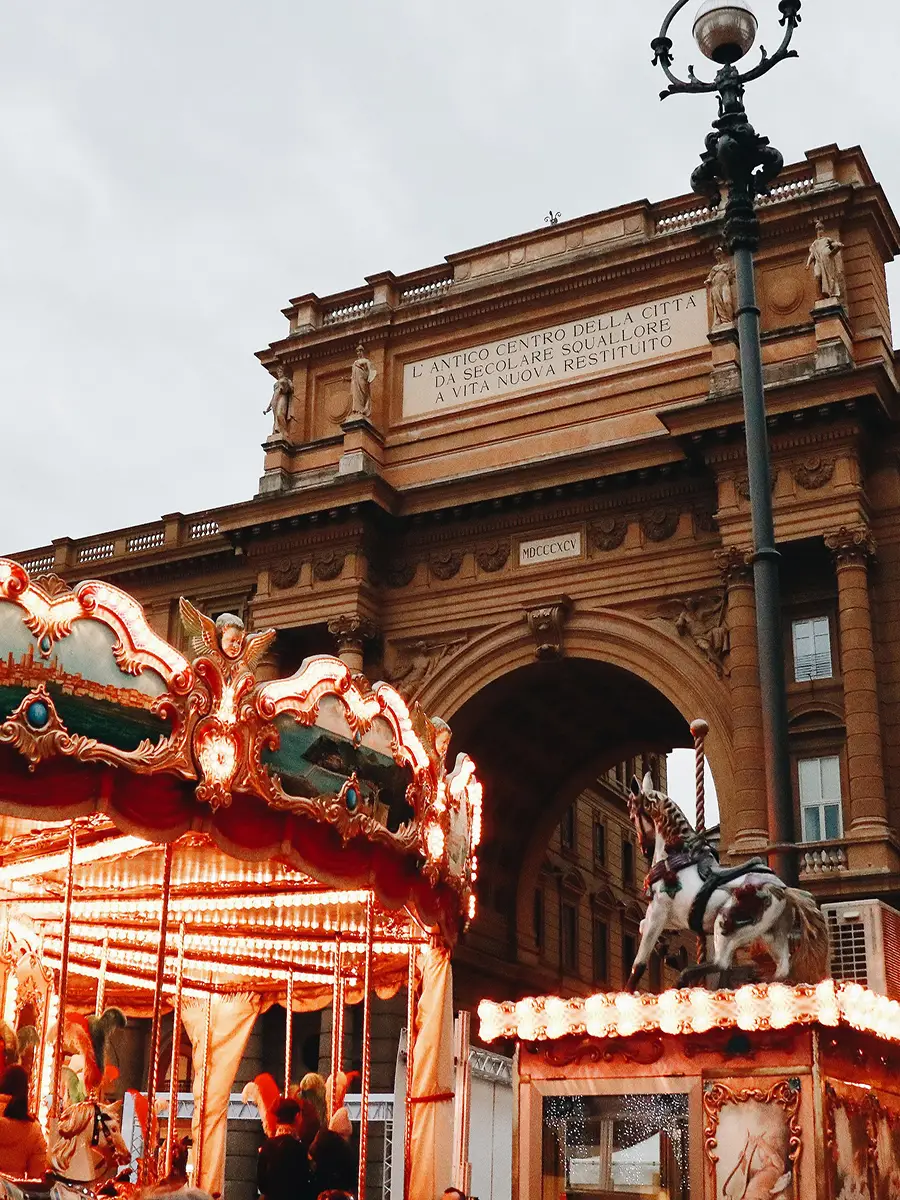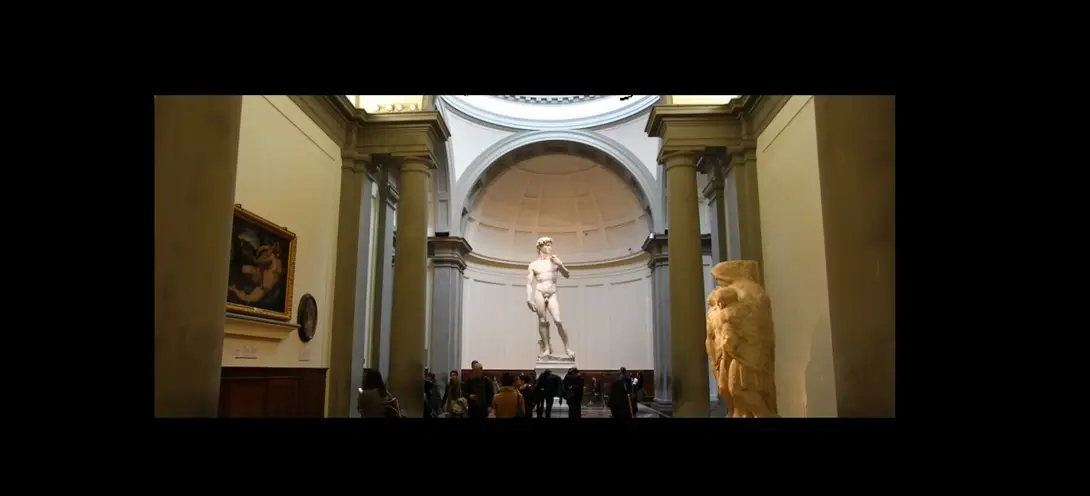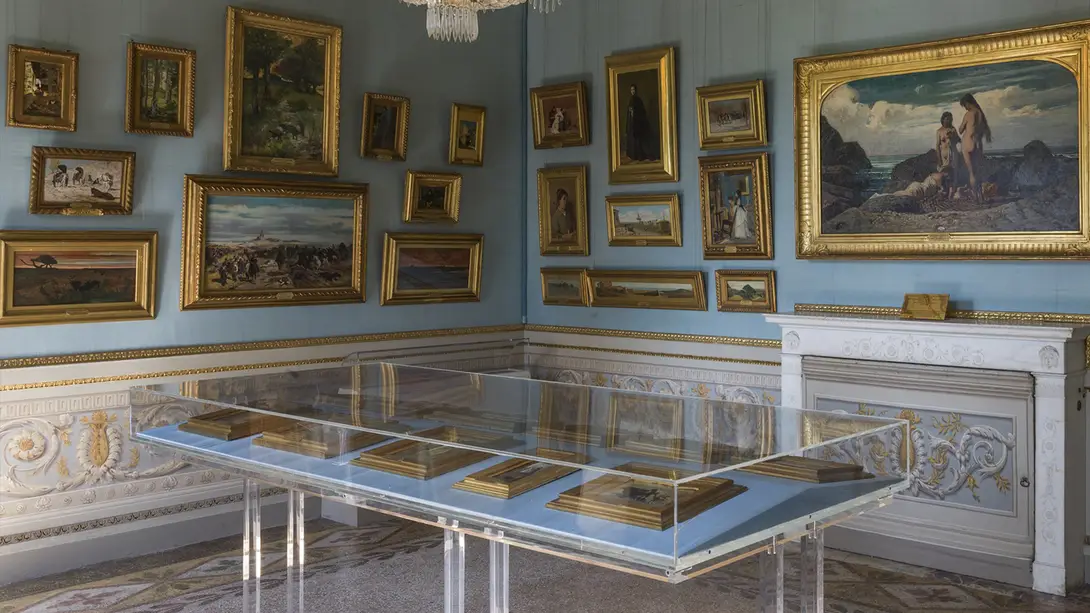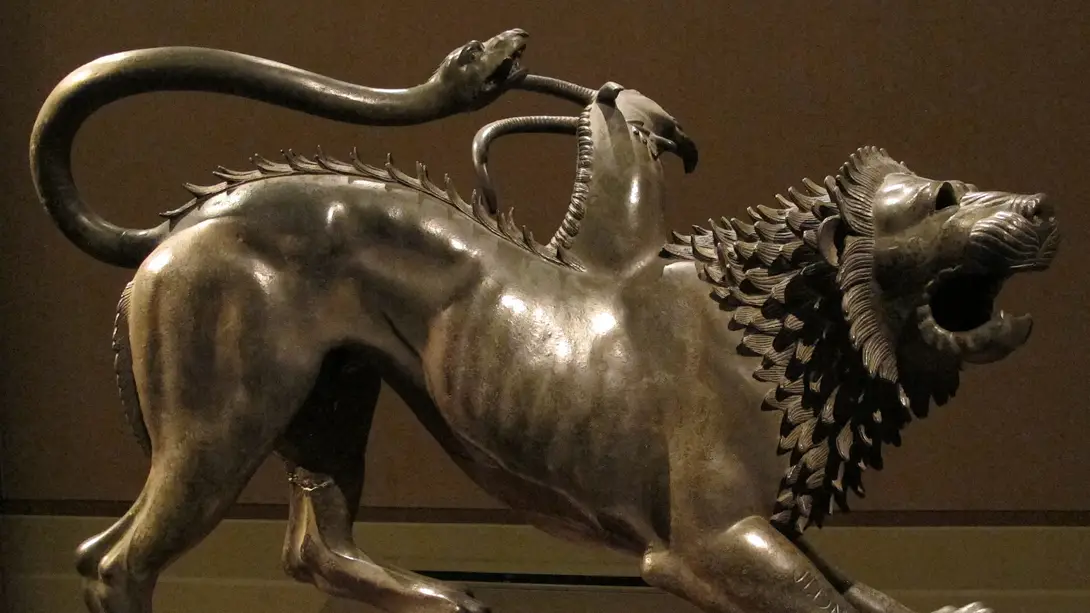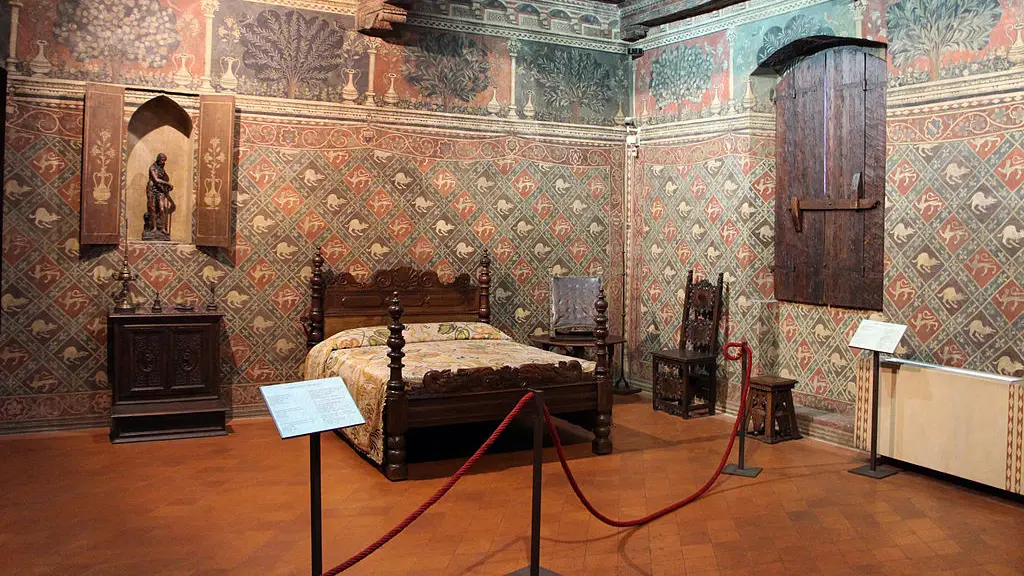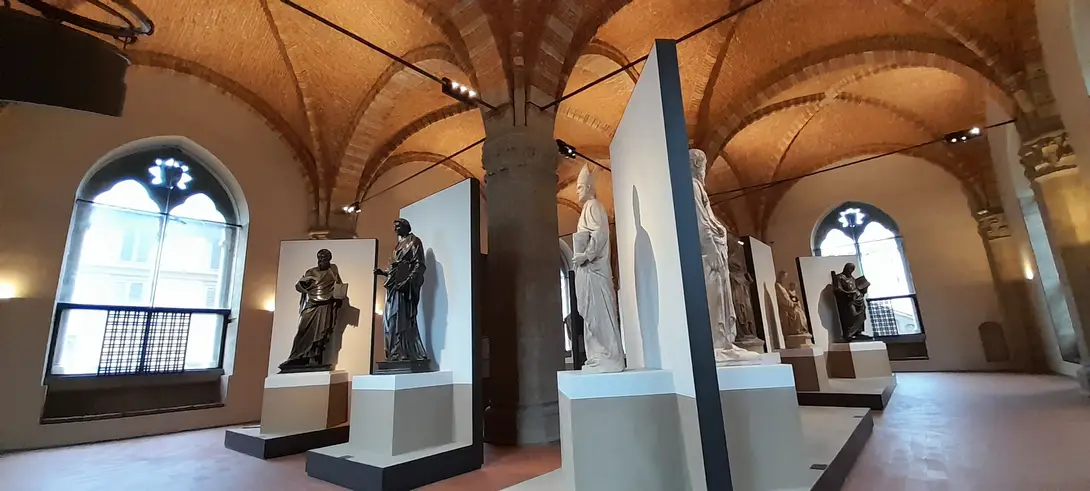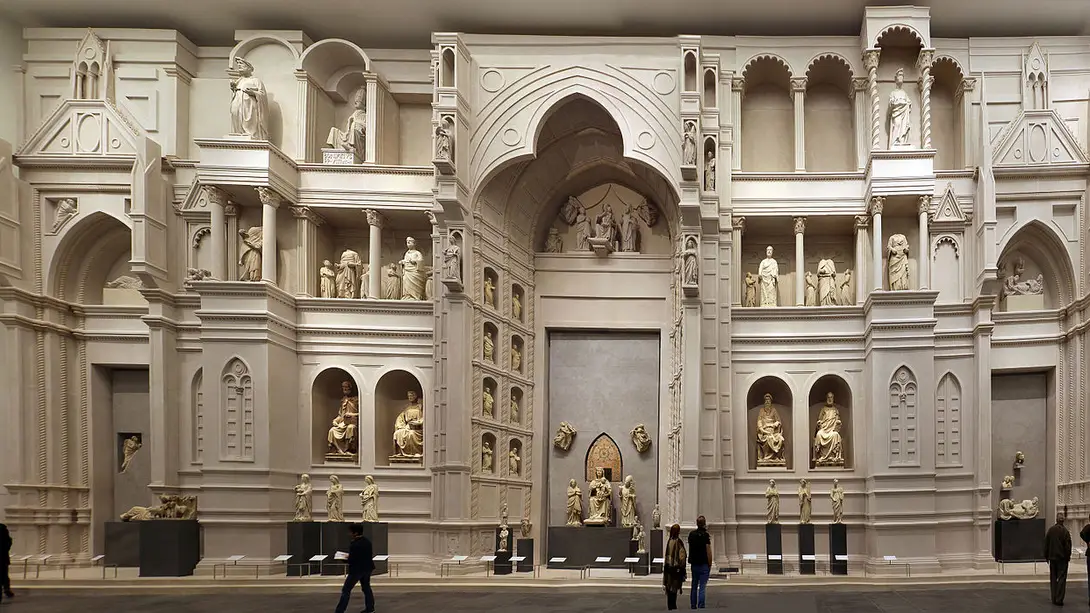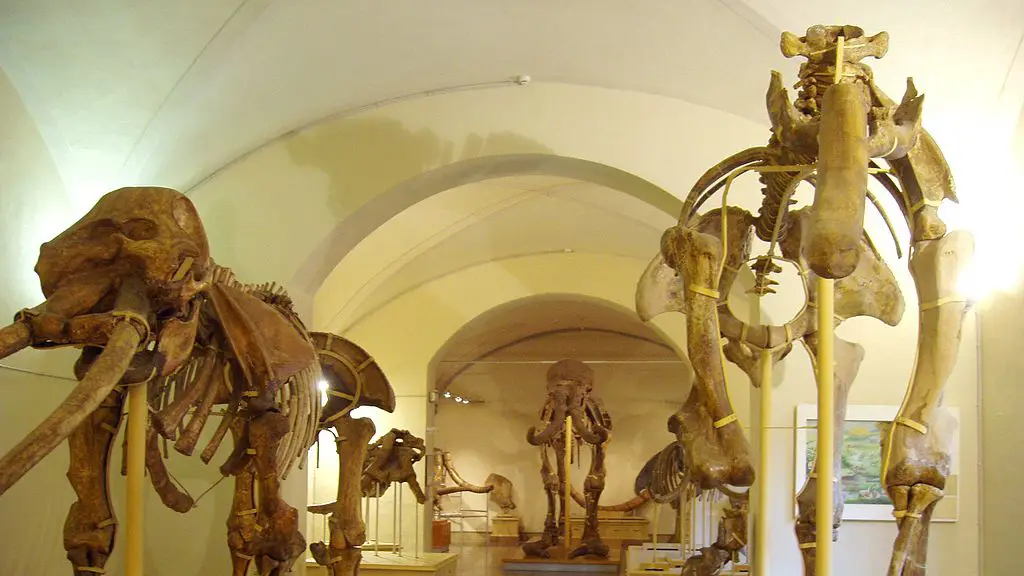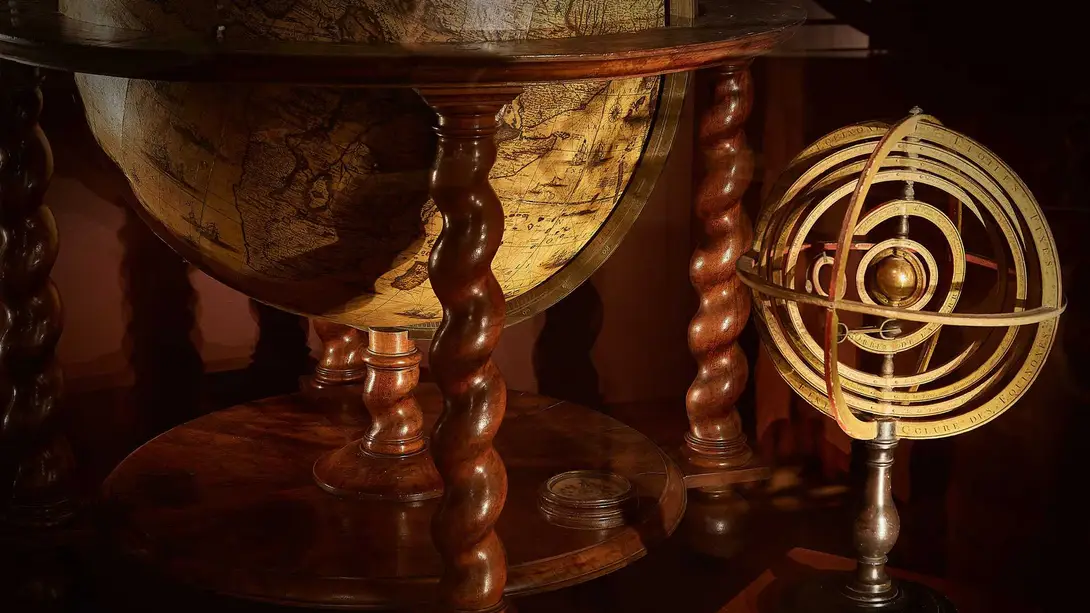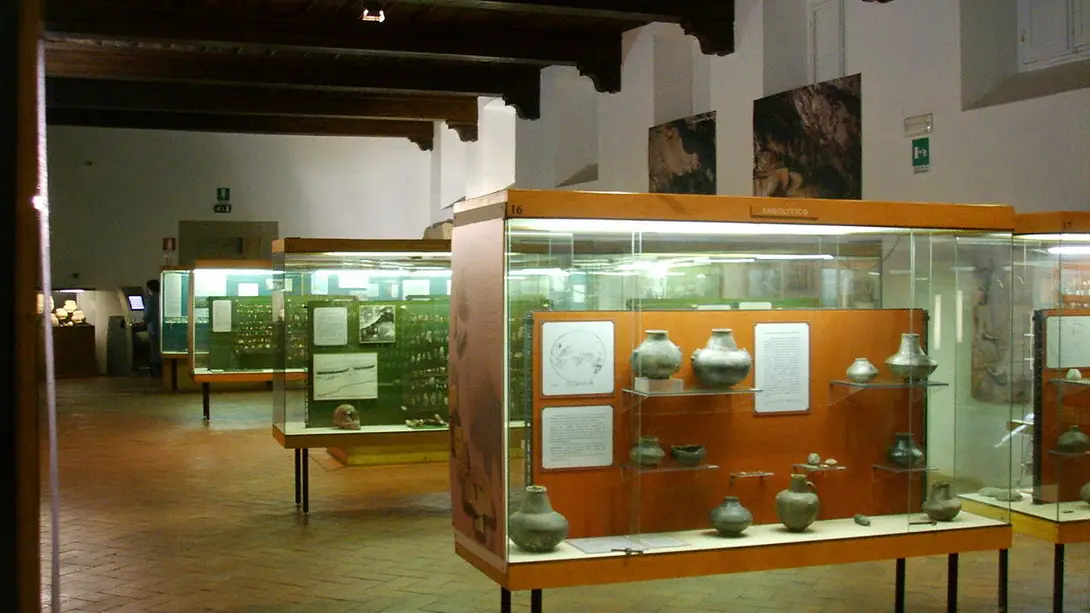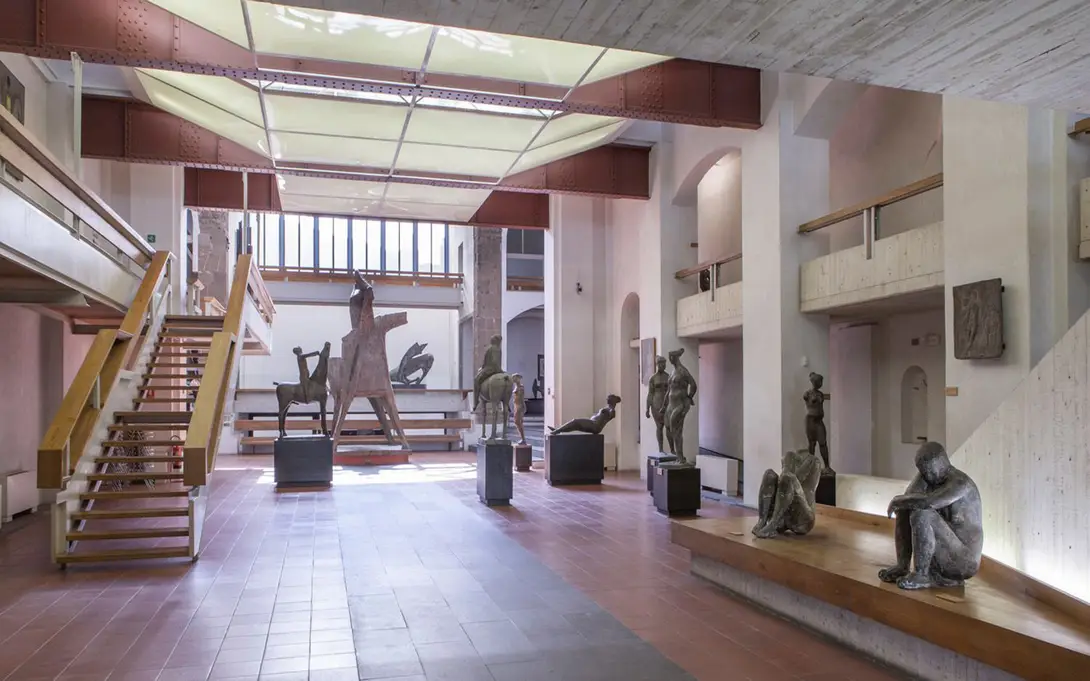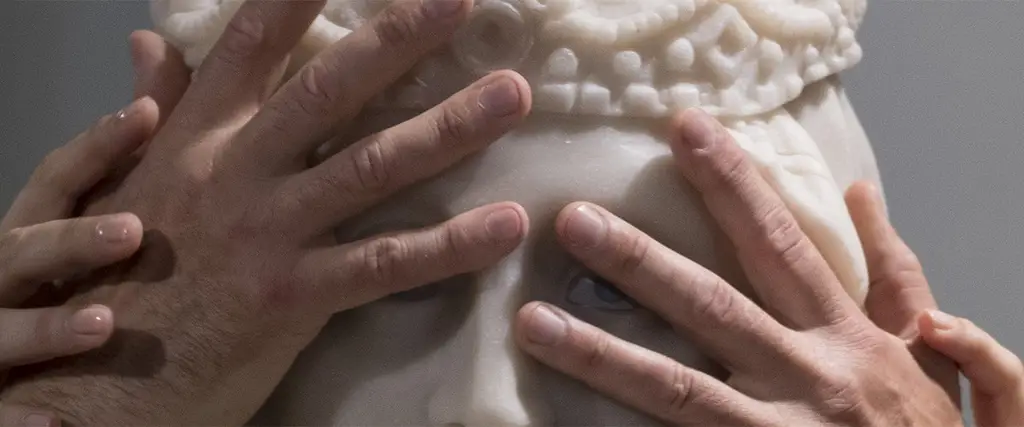
Museums to touch: tours for people with visual impairments
For a first orientation we suggest, in piazza Repubblica, the high relief representing the center of Florence, whih makes possible to realize how the city is structured through the touch. A second tactile model is located on the other side of the Arno river at the beginning of Via Guicciardini.
In Florence, people with visual impairments are welcome to many places of interest thanks to special museum sections designed for them! State, Municipal and Science Museums as well as Santa Maria del Fiore Complex offer the opportunity to enjoy the visit touching and experiencing masterpieces through a dedicated path.
National museums
Let’s start with the Uffizi Gallery, with its several proposes, among which Uffizi by touch (people have the opportunity to explore ancient sculptures from the Medici's collection). Inside the Pitti Palace, also the Modern Art Gallery is accessible for visually impaired visitors thanks to a tactile tour; in Boboli Garden sometimes olfactory tours are organized.
The Academy Gallery: waiting for the new artistic tactile tour inspired by the shape of Michelangelo’s David and the prisoners, some other works have been reproduced in 3D. At the nearby Archaeological Museum tactile visits are organized on request.
At the Bargello Museum, it is possible for visually impaired to touch sculptures appreciating the shapes of the works; at the Davanzati Palace a canteen have been set up with reproductions of majolica pottery and antique fabrics for the fruition of visually impaired and blind people; OrsanmicheleComplex allows a tactile tour to the replicas oft he statues adorning the church. Not to forget the San Marco Museum, with the tactile reproduction of “Annunciazione” by Beato Angelico, and the Villa Corsini al Castello, with ancient Roman statues.
Municipal museums
The municipal museums offer both self & guided tours inside Palazzo Vecchio and the Museo Novecento. In the former there is a model of the Palazzo (courtyard of the Dogana) and numerous tactile stations; the latter allows visitors to appreciate reproductions of works by famous artists (Giorgio Morandi, Arturo Martini, Ottone Rosai). In both cases the audio content can be accessed also at the respective links, ‘inclusive museum’ section.
The Duomo Complex has defined TouchAble, a tactile path at the Opera del Duomo Museum: it's a deep and emotional experience enjoyable by all visitors, without sight, for a different approach to art!
Not to miss the initiatives of the Natural History Museums in Florence: the olfactory path at the Botanical Gardens and the tactile tour at Palaeontology sector, which winds through the gallery of the great fossil mammals of Tuscany. At the Galileo Museum, the visit allows to touch original instruments to figure out how did they work. Periodically also the Florentine Institute of Prehistory and the Marino Marini museums organize guided tours for those with visual impairments.
Comune di Firenze
Useful information
The places
Stages
Piazza della Repubblica
The vast square piazza della Repubblica is the result of the nineteenth-century demolition of the ancient city centre, at the time of Florence as the capital of Italy (1865-1871).
This was one of the most characteristic areas and over the centuries it had kept the medieval building fabric almost intact, with narrow streets and buildings leaning against each other. Here, together with medieval towers, artisan workshops, houses, there were also the Jewish ghetto and Vasari's Loggia del Pesce (the "Fish Loggia", later rebuilt in Piazza de' Ciompi); in the center was the Piazza del Mercato Vecchio (the "Old Market") built on the site of the Forum of the Roman city (the Column of Abundance marks the meeting point between the Cardo and the Decumanus, the two main Roman streets). The operation was presented as necessary to restore the hygienic and sanitary conditions of the area.
The background of the square is dominated by the monumental portico, the "Gallery" created by Vincenzo Micheli in 1895 - passing under the large central arch you can easily reach Palazzo Strozzi and via Tornabuoni - while on the sides the square is animated by numerous venues, including a series of important historical cafés once a meeting place for artists and writers.
The Uffizi Gallery
With its immense artistic legacy, the Uffizi Gallery, now The Uffizi, is one of the most important museums in the world. Following a substantial reorganization in the 17th century, which led to the transfer of some collections (arms, scientific instruments, archaeological finds, ancient and modern bronzes) to other sites and the establishment of new museums, the Uffizi mainly became a picture gallery, with thousands of works ranging from the 13th to the 18th centuries. After the suppression of churches and convents in the 18th and 19th centuries, many works of ecclesiastical provenance swelled the gallery’s collections; other important paintings were acquired at the beginning of the 20th century.
Masterpieces held in the museum include: the large altarpieces of Cimabue and Giotto; 14th-century Sienese art (including a fine Annunciation by Simone Martini); a rich spectrum of 15th-century art from Tuscany and central Italy, with works by Masaccio and Masolino (Madonna and Child with Saint Anne), Filippo Lippi, Botticelli (Birth of Venus and the Primavera), Piero della Francesca (Portraits of Duke Federico da Montefeltro and his Duchess Battista Sforza of Urbino) and Gentile da Fabriano (Adoration of the Magi).
The rooms devoted to 16th-century painting contain works by the masters of the principal Italian schools: from the Adoration of the Magi by Leonardo da Vinci to Michelangelo and Raphael, while Titian, with his Venus of Urbino, Veronese and Tintoretto represent the flowering of painting in the Veneto. Foreign artists are also well represented, with works by Albrecht Dürer, Hans Holbein and El Greco.
The series of 17th-century works opens with Caravaggio’s Bacchus, and features a rich range of work from the major European schools, including Rubens, Van Dyck and the self-portraits by Rembrandt. Finally, Canaletto and Guardi, together with Longhi and Tiepolo, offer a sample of 18th-century art. In addition, the gallery holds ancient sculptures, miniatures and tapestries from the Medici collections. Work is currently underway on the ‘New Uffizi’, which will double the amount of exhibition space, permitting the display of works previously inaccessible to the public.
A map of suggested paths in the gallery - including their duration - is available on the Uffizi Official Website.
Galleria dell'Accademia di Firenze - Academy gallery
The Academy Gallery (Galleria dell'Accademia) in Florence is known around the world as the ‘Michelangelo Museum’ (for the statues of David and the Prisoners), but it is actually much more than that.
It stands on the site where two convents originally stood, next to the Academy of Fine Arts, which still has its seat here. The first nucleus of the collection was formed in 1784 with a series of works of art, donated by the Lorraine Grand Duke Pietro Leopoldo; in 1873 Michelangelo's David, a true icon of western art, created by the artist between 1501and 1504, was moved here (from Piazza Signoria, replaced by a copy). Later, other works by Michelangelo arrived at the Accademia Gallery: the Four Prisoners (conceived for the tomb of Pope Julius II), the St. Matthew and the Palestrina Pietà, all unfinished works by the great artist, representing Michelangelo's famous ‘unfinished’.
In the Sala del Colosso is the original sketch of the Rape of the Sabine Women by Giambologna, together with numerous paintings of 15th and 16th century Florentine painting (Paolo Uccello, Botticelli, Perugino, Ghirlandaio, Filippino Lippi). Other important 16th-century paintings are exhibited along the Galleria dei Prigioni and in the Tribuna del David, adjacent to the Giposteca Bartolini, where numerous plaster casts by the famous 19th-century sculptor (and other contemporary artists) are collected.
In the Halls of the 13th and 14th centuries, numerous paintings can be admired, including works by important followers of Giotto (Tadeeo Gaddi, Bernardo Daddi, Orcagna) up to the International Gothic of the early 15th century. Don't miss the Museum of Ancient Musical Instruments (from the nearby Luigi Cherubini Music Conservatory, and even earlier from the Grand Ducal and Lorraine collections): about fifty pieces, including a viola and cello by Antonio Stradivari, a spinet and a forte-piano by Bartolomeo Cristofori, the inventor of the piano.
Modern Art Gallery - Pitti Palace
The Galleria d'Arte Moderna is located on the second floor of the Pitti Palace, and is a museum where one can admire collections of sculptures and paintings spanning the period between the late 18th century and the early decades of the 20th century, displayed in elegantly decorated and furnished monumental rooms.
The works bear witness to important artistic currents such as Neoclassicism, Romanticism, but above all the Macchiaioli School, which in the mid 19th century constituted a break with academic painting in Tuscany. Giovanni Fattori, one of the most significant Macchiaioli painters, can be admired in this museum.
The thirty rooms also house evidence of the Italian schools of the second half of the 19th century, with currents linked to Decadentism, Symbolism, Post-Impressionism and Divisionism, up to the artistic movements of the early 20th century.
The Andito degli Angiolini, often used for temporary exhibitions, is also part of the museum itinerary.
Archaeological Museum of Florence
The National Archaeological Museum, one of the most important, of this kind in Italy. houses masterpieces of the Etruscan, Greek-Roman and Egyptian art. It's inside the 17th century Palazzo della Crocetta, to which the Medici and Lorraine collections of antiquities were transferred from the Uffizi at the end of the 19th century.
The main core of works relates to theEtruscan civilization, including the large bronze statues of the Chimera and the Arringatore (Orator), plus an impressive selection of funerary sculptures (sarcophagi and urns), Greek pots and Attic ceramics, the highlight of which is the large black-figure crater known as the François Vase, which is decorated with mythological subjects.
The museum hosts a relevant collection of Etruscan andRoman bronzes, jewellery and ancients coins, some of which are unique worldwide. The collection of theEgyptian Museum, second in Italy only to the one in Turin, was put together mainly as a result of a French-Tuscan expedition to Egypt in 1828. It comprises materials ranging from the prehistoric period through to the early Christian era: vases, sculptures, sarcophagi with mummies, papyruses, amulets and small bronzesfrom various ages.
In the garden outside there are a number of reconstructed archaeological monuments. The garden is closed to the public.
The museum and its collections are suitable for very young visitors. Workshops and activities for family and children are occasionally organized in the museum’s rooms.
___________________________________________________________________
Attention, due to important renovation works, until the beginning of 2026 the entrance is from via della Colonna 38 (the ancient entrance).
Bargello National Museum
The Bargello National Museum is a place of extraordinary interest. The evocative medieval building houses a unique collection of Italian sculpture, mainly from the Renaissance period (masterpieces by Donatello, Michelangelo, Verrocchio, Della Robbia), but also from the Mannerist and Baroque periods.
The fascinating Medieval building was built starting in 1255 as the Palazzo del Capitano del Popolo; during the Medici era it became the seat of the Bargello (Chief of the guards who presided over public order) and was later turned into a prison. In the 19th century, following a philological restoration, the palazzo was turned into a museum: the first national museum of the unified state.
On the ground floor, next to the splendid courtyard, is the 16th century hall with a series of sculptures by Michelangelo (Bacchus, Tondo Pitti, Brutus and David-Apollo) and works by Sansovino, Giambologna and Cellini. The 13th-century hall on the first floor houses masterpieces by Donatello, including the David and St George, and sculptors from the early Florentine Renaissance (Luca della Robbia and Desiderio da Settignano); the two versions (by Ghiberti and Brunelleschi) of the Sacrifice of Isaac, made for the competition (1401) for the second door of the Baptistery, are also on display here. On the second floor are Tuscan sculptures from the second half of the 15th century, including Verrocchio's famous Lady with the Mazzolino, as well as works by Rossellino, Pollaiolo and others. A small Baroque masterpiece is the bust of Costanza Bonarelli by Gian Lorenzo Bernini.
The Giottesque fresco cycle in the Cappella del Podestà features one of the oldest portraits of Dante Alighieri. The museum's collections include an important collection (‘Carrand Collection’) of Gothic and Renaissance minor art (ivories, gold, ceramics, weapons, bronzes and medals), as well as a complete panorama of Italian majolica from the 15th century onwards. Also noteworthy are the rooms dedicated to the glazed terracottas of the Della Robbia family and the new Islamic Gallery, recently reorganized with the Majolica Room.
Museo di Palazzo Davanzati
Originally built in the mid-14th century for the Davizzi family and then acquired by the Davanzati in the 15th century, the palace is an extraordinary example of a 14th-century Florentine house, with some interesting interior architecture and mural decorations with geometric motifs that were typical of the age.
Furniture, paintings, tapestries and domestic objects give a good overall picture of what an upper-class Florentine home would have been like between the 14th and 17th centuries; there are also many paintings with secular and religious themes, sculptures and a collection of ceramics and majolicas from various manufactories. There is also one of the richest lace collections in Italy, displayed in a dedicated room on the third floor.
Church and Museum of Orsanmichele
The imposing building, with an unusual shape, along via Calzaioli, was built in 1337 originally as a municipal granary, near a vegetable garden named after San Michele Arcangelo; the loggia on the ground floor was subsequently closed and transformed into a church at the end of the 14th century, decorated inside by the grandiose tabernacle in marble and mosaics, a fourteenth-century work by Andrea Orcagna.
The four sides of the building are characterized by numerous tabernacles, mainly created by medieval arts and crafts guilds: many of the niches contain sculptures depicting their respective patron saints; these are mostly works from the Early Renaissance, among which we admire masterpieces by Donatello, Ghiberti, Verrocchio; most of the originals of these works are in the Orsanmichelemuseum (set up on the top floor of this splendid building) or elsewhere, such as the iconic Donatello's San Giorgio, at the Bargello.
Villa Corsini in Castello
The Villa Corsini in Castello, close to the famous Medici Villa La Petraia, was purchased in 1697 by the Counsellor to the Grand Duke Cosimo III de’ Medici, Filippo Corsini. Corsini then entrusted the renovation to Giovan Battista Foggini (1652-1725), architect and sculptor to the Grand Duke, so that it has an unusual (for Florence) baroque aspect.
In 1968 the villa was donated to the Italian State. Since the late 1980s the villa has housed a repository of archaeological exhibits belonging to the Tuscan Archaeological Superintendency and has undergone important renovation works. Some of the most important marbles from the collection of the Archaeological Museum have been set up in the salon: particularly striking are the porphyry statue of the Emperor Hadrian, unique of its kind, and that of the Peplophoros from Palazzo Cepparello, a splendid Roman replica of a Greek original from the 5th century BC.
On the first floor are visible the remains of the grave goods from the “Tomba della Mula” (Etruscan tomb dating back to late 7th century BC) and funereal sculptures from archaic Fiesole workshops, including the exceptional “Cippo di Settimello” (mid-6th century BC).
Set along the walls of the courtyard are numerous Etruscan sarcophagi.
Museo dell'Opera del Duomo
The Museo dell'Opera del Duomo houses, for conservation reasons, a whole series of works of art from the Santa Maria del Fiore complex (Cathedral, Baptistery and Bell Tower). A complete refurbishment, inaugurated in 2015, has enhanced the extraordinary collection documenting the history of Florentine sculpture during the building of the Duomo, starting with Arnolfo di Cambio's amazing reconstruction of the ancient façade.
The museum houses some fundamental works of Italian art, such as the Cantorie (choirs' tribunes) by Donatello and Luca della Robbia, which are among the most significant moments of 15th-century sculpture. Other iconic sculptures include Donatello's Penitent Magdalene, a wooden figure of strong realism from the mid 15th century, and Michelangelo's intense ‘Bandini’ Pietà, a masterpiece of the great artist's maturity.
One section is entirely dedicated to the doors of the Baptistery, where the panels of the Gates of Paradise by Lorenzo Ghiberti stand out.
There are also various wooden models of the dome and a series of tools documenting the work of the workers at the time of Brunelleschi's building site. Belonging to the Cathedral Treasury is the Altar of St. John, a masterpiece of 15th-century Florentine goldsmithing, made for the Baptistery.
Museo di Storia Naturale dell'Università di Firenze - Botanical Garden, Giardino dei Semplici
The Botanical Garden, called also “Giardino dei Semplici”, created by the Medicis as a garden for medicinal plants (the “Simples”) in 1545, are among the oldest Gardens in the world. Between the 16th and 17th centuries, it enjoyed a period of great splendour. It covers an area of over two hectares, indoors and outdoors.
In its warm and cold greenhouses, built in the nineteenth century and the largest in Italy, are placed tropical and subtropical plants including the collections of Cicadae, of particular interest, Ficus, Palms, an ancient collection of citruses, succulent and aquatic plants, in addition to a rich collection of plants for traditional ethnobotanical uses.
Outdoors we find the vast collection of edible plants, the flowerbeds of medicinal and poisonous plants, the Zen garden and two acclimatization beds for exotic palms and Cicadae, hydrangeas in numerous varieties, the historical collection of azaleas, the pools with aquatic plants, among which there are species worthy of conservation, in addition to the lotus flowers and water lilies. Three display cases contain a small collection of carnivorous plants.
In the Garden, there are more than 200 trees, among which the magnificent 5 monumental trees, including the yew, planted in 1720 - the oldest specimen in the garden - and the cork oak of 1805.
Museo di Storia Naturale dell'Università di Firenze - Geology and Paleontology
The exhibition is dedicated to the fossils of large mammals, mollusks, and plants that illustrate the history of paleontology and are precious witnesses of the Earth's past.
Of great impact are the skeletons of southern mastodons and mammoths. There are also skeletons of a cavern lion, a leopard, a saber-toothed tiger who lived millions of years ago in Tuscany when the area was a savannah. Visitors can also admire skeletons of sirenians, large ancient herbivorous aquatic mammals, distant relatives of the elephants, and progenitors of the Dugongidae and the Lamantines still present in the Atlantic and the Indian Ocean.
The exhibition wraps up with the modern Sala della balena (the Whale Room), an immersive space in which the visitor can walk "on the bottom of the sea", next to the 10-metre long skeleton of a Balenopteridae lived three million years ago and today exhibited with the remains of the animals that have fed on the carcass, from the great sharks to the very small bone-eater worms.
The museum's website provides the schedule for guided tours and activities for families with children.
Galileo Museum
The museum, formerly the ‘Museum of the History of Science’ of Florence, is dedicated to the famous Tuscan scientist, Galileo Galilei, to whom we owe great astronomical discoveries and the birth of the scientific method. It is a museum derived directly from the Museum of Physics and Natural Sciences commissioned by Pietro Leopoldo of Lorraine. It is organised according to chronological and thematic criteria and houses the main nuclei of the Medici (15th to 18th centuries) and Lorraine (18th and 19th centuries) collections of scientific instruments.
The themes range from astronomy to the measurement of time and space, from geography and cartography to meteorology, from mechanics to optics, from electricity and magnetism to chemistry and pharmacy. Of particular interest are the Renaissance mathematical and astronomical instruments and the section dedicated to Galileo, with frescoes and bas-reliefs depicting Galilean discoveries and the great scientist's instruments.
The museum offers a rich programme of educational activities, guided tours and workshops for children and families.
Museo e Istituto Fiorentino di Preistoria
Occupying the first floor of the historic Convent of the Oblate Nuns, the museum has a rich collection of originalitems and reproductions illustrating the history of the human racefrom the Stone Age through to the Metal Age. The items on display are from Italy, elsewhere in Europe, Asia and Africa.
The museum also has a section specially designedfor nursery school children, who are introduced to the prehistoric and ancient world via exhibits basedonfairy tales and games.
During the year, the museum organizes activities for families with children from 4 years up, guided tours and workshops.
Marino Marini Museum
The Marino Marini Museum, dedicated to the famous 20th-century Italian sculptor, is housed in the former church of San Pancrazio, where Renaissance lines are combined with modern renovation.
It is a monographic museum that houses 184 works by sculptor Marino Marini (1901-1980), arranged according to the artist's instructions in the choice of materials and natural lighting of the rooms. The works were created between 1916 and 1977. The exhibition, spread over the different levels of the church spaces, includes bronze and concrete sculptures of very different sizes, polychrome plaster casts and canvases, portraits and drawings. Exhibitions dedicated to various 20th-century and contemporary artists are periodically held in the crypt.
The Tempietto del Santo Sepolcro (Temple of the Holy Sepulchre) by Leon Battista Alberti, a Renaissance work with precious marble inlays, rich in allegorical meanings, is also on display.
